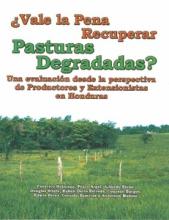Land Library
Welcome to the Land Portal Library. Explore our vast collection of open-access resources (over 74,000) including reports, journal articles, research papers, peer-reviewed publications, legal documents, videos and much more.
/ library resources
Showing items 1 through 9 of 22.Representation of land-use and hydrologic interactions in respective models has traditionally been problematic. The use of static land-use in most hydrologic models or that of the use of simple hydrologic proxies in land-use change models call for more integrated approaches.
Representation of land-use and hydrologic interactions in respective models has traditionally been problematic. The use of static land-use in most hydrologic models or that of the use of simple hydrologic proxies in land-use change models call for more integrated approaches.
Defining rangelands as anthromes enabled Ellis and Ramankutty (2008) to conclude that more than three-quarters of Earth’s land is anthropogenic; without rangelands, this figure would have been less than half.
Sustainable participatory watershed management is an approach promoted by the Ethiopian government to restore natural resources and agricultural productivity across the country.
Ecological restoration through exclosure establishment has become an increasingly important approach to reversing degraded ecosystems in rangelands worldwide. The present study was conducted in northwestern Ethiopia where policy programs are aiming to restore degraded lands.
The socio-ecological system dominated by pastureland in the Asteroussia Mountains (Crete, Greece) was analyzed over a long time interval (1945–2010) to identify the most relevant system’s characteristics and changes.
In the Sahel, sandy soils are widespread and support not only most of pearl millet production, the major staple crop in the region, but also forage production for livestock. Parent sediments of these soils have an aeolian origin and hence are prone to wind erosion.
Climate change science has been discussed and synthesized by the world's best minds at unprecedented scales. Now that the Kyoto Protocol may become a reality, it is time to be realistic about the likelihood of success of mitigation activities.



